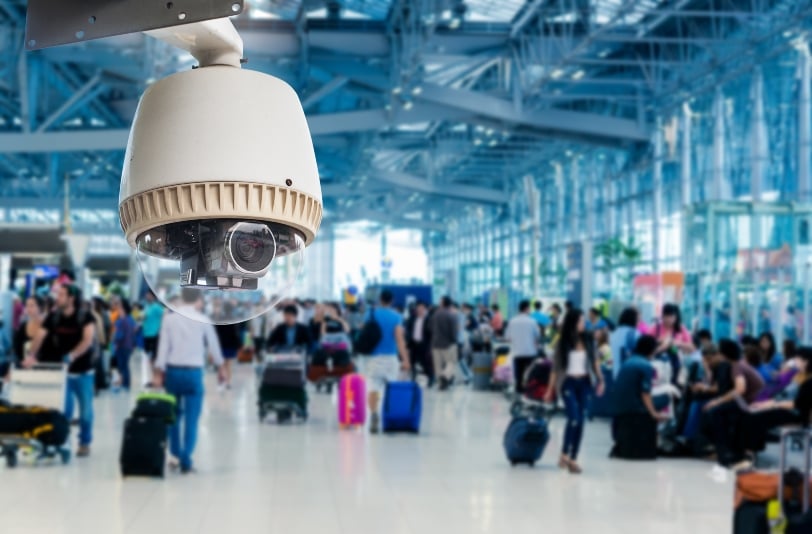
FMI has launched a report on the airport security market, which reveals increased frequency of air travel together with rising security threats is furthering deployment of airport security solutions, using the Gatwick Airport drone incident as an example.
The global airport security market is estimated to reach US$ 13,722.4 million in 2023. As per the FMI report, sales are forecast to increase at a robust 5% CAGR, with the market valuation reaching US$ 22,352.3 million by 2033.
Total sales in the global travel and tourism sector market represent – 4-9% of the global airport service, said the market research firm.
According to FMI, macroeconomic expansion, the emergence of the middle class in developing nations, and the continuous expansion of e-commerce are likely to drive development in the airport service sector during the next years. Additionally, the need for aviation security providers is expected to persist due to rising geopolitical and terrorist concerns.
Airports and airlines face increasingly complicated difficulties. Aircraft occasionally land and take off every minute or so. Maximum effectiveness is necessary. Passengers and employees are now subject to more thorough security checks.
Safety remains the foremost concern, and the phrase “safety first” is more than simply a catchphrase. However, the conflict over passenger safety has changed. While many people may still be primarily concerned about turbulence in the air or a technological malfunction, today’s greatest potential threat comes from human behavior, which is what is driving the business.
IATA and Airports Council International (ACI) have joined forces to create Smart Security, a programmer that enhances security results in the face of constantly changing threats while also enhancing operational effectiveness, passenger and cabin experiences, and luggage inspection procedure. It accomplishes this through a combination of novel techniques and technology, including concepts for risk-based security. Several of Smart Security’s technological and process innovations are gaining traction; lane automation, for instance, and centralized picture systems for processing and checkpoints; Smart Security is leading the way in advancing security for the screening of passengers and luggage. The objectives of smart security are to boost security and enhance the passenger experience, and efficiency.
Airports are under pressure to contribute to the fight against the evolving threats to aviation. Constantly changing detection techniques are being regulated more and more, posing various new difficulties for the airport security sector.
Paying the bills is one of the biggest obstacles. The modifications entail a considerable financial outlay, with the equipment’s purchase and installation accounting for the majority of the expense. Depending on the design, one security lane and the accompanying equipment might cost up to US$1.32 million when implemented.
The 3D X-ray machines weigh a lot more than the standard X-ray equipment airports currently employ. It may be necessary for some airports to reinforce floors and, in some cases, build new structures to accommodate them, which would be an extremely costly endeavor.
Following reports of drone sightings at the airport border and close to the runway, Gatwick Airport had hundreds of flights cancelled between December 19 and December 21, 2018.
This resulted in Britain’s second-busiest airport in Britain being closed for 36 hours.
Due to repeated reports of drone sightings just as the runway was about to reopen, police believed a drone operator had purposefully interfered with flights.
Several other airports across the world experienced short closures, which affected Heathrow Airport.
The military was called in on 20 December to assist in putting an end to the unusual scenario. Due to ongoing reports of sightings, the airport announced at 23:30 on the same day that the runway would stay closed and all aircraft would be cancelled for the remainder of the evening.
At roughly 6:00 am the next day, Gatwick Airport reopened with a constrained capacity. At 9:30, Chris Woodroofe, the chief operating officer of Gatwick Airport, stated that the runway conditions were “near normal” and that by the end of the day, everything will be “back to normal.”
Owing to the relocation of crews and aircraft, some planned flights on 22 December had delays. The runway was once again closed at 17:30 due to a possible drone sighting, and it was reopened at 18:23.
On January 3, 2019, the RAF left the airport after Gatwick invested £5 million in an attack-prevention system. Authorities in Europe have enacted and developed guidelines on airport security to prevent such assaults and mishaps.